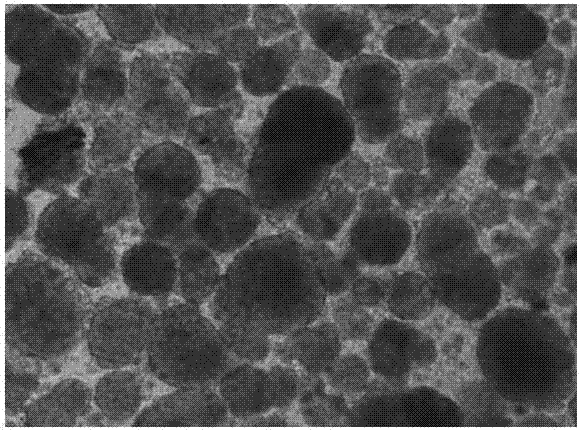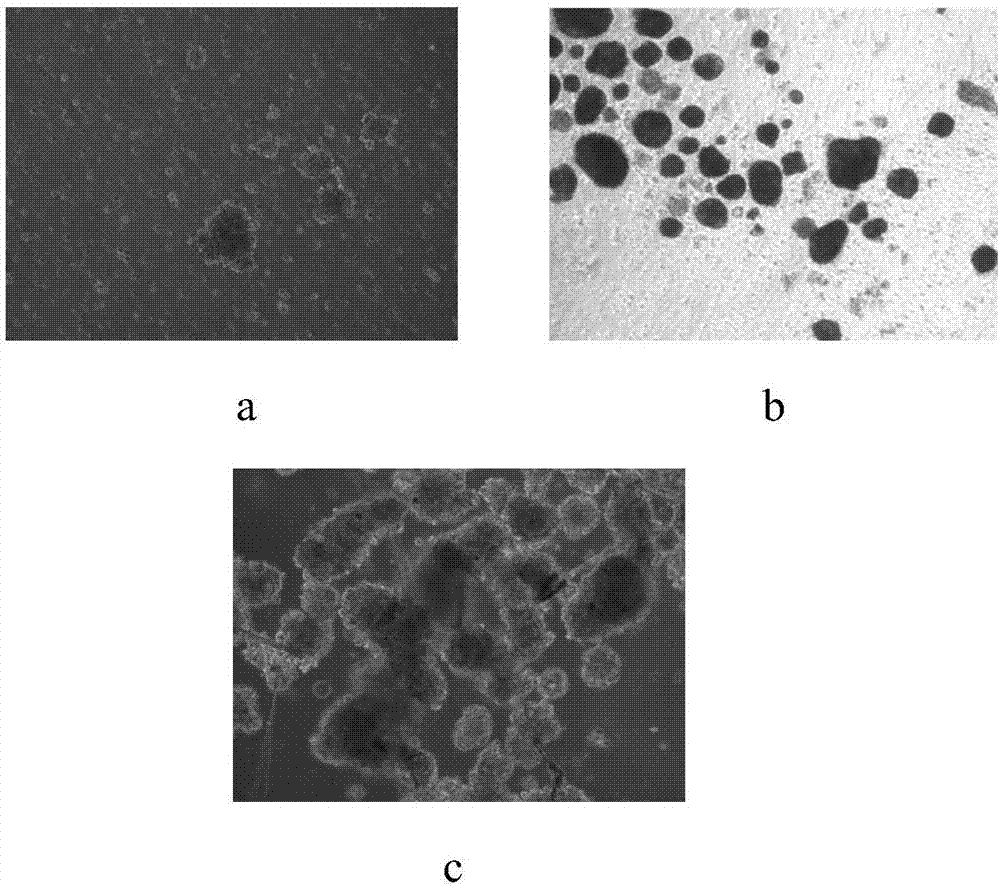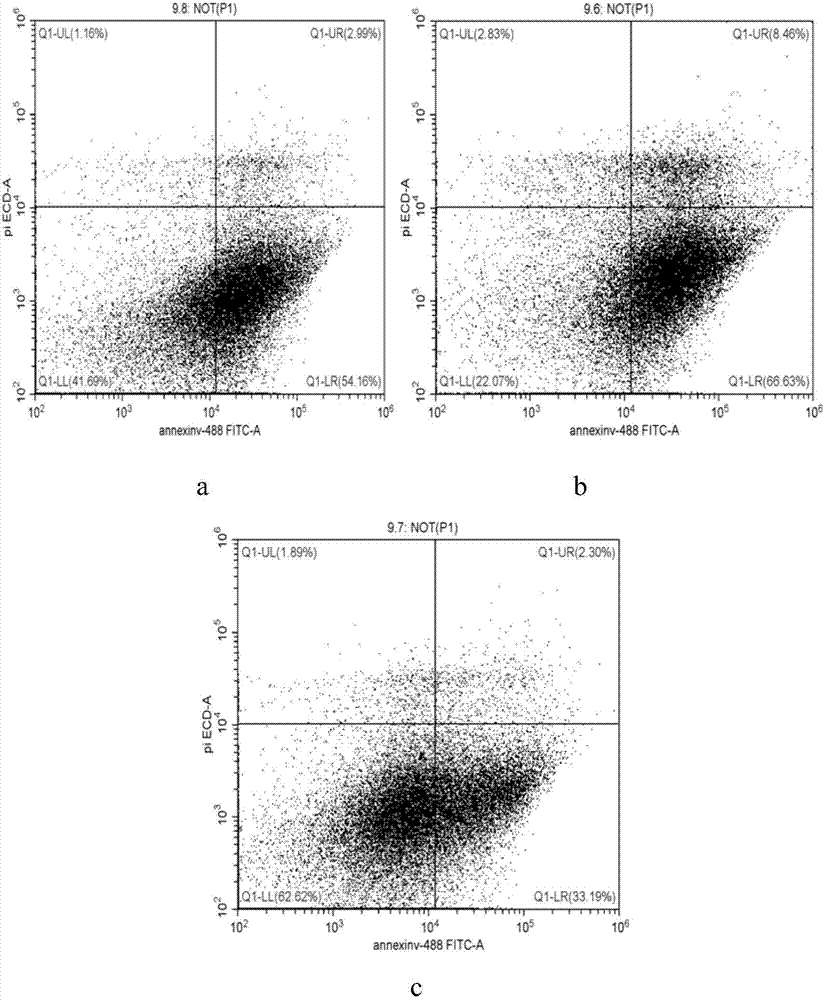Porcine islet cell frozen stock solution and cryopreservation method
A technology of islet cells and cryopreservation solution, which is applied in the field of cryopreservation solution and cryopreservation of porcine islet cells, can solve the problems of low viability of islet cell clusters, inability to effectively protect islet cell clusters, and inability to preserve long-term storage, and achieve High activity rate and the effect of reducing apoptosis
- Summary
- Abstract
- Description
- Claims
- Application Information
AI Technical Summary
Problems solved by technology
Method used
Image
Examples
Embodiment 1
[0030] Embodiment 1 Cryopreservation experiment of porcine islet cells
[0031] Islet cell counting: take 50 μl of samples from the cell suspension each time, count DTZ-positive cell clusters under the microscope and repeat the sampling 3 times, and count islets according to the following formula: islet yield = (sum of 3 positive islet values / 3) × [Total amount of sample (ml) / 50 μl].
[0032] Divide the isolated and extracted porcine islet cells into two parts for cryopreservation: the first part of porcine islet cells is resuspended with ordinary freezing medium (50% serum + 10% DMSO + 40% basal medium) at a density of 10,000 IEQ / mL; In cryopreservation tubes, about 1 mL per tube; cool down to -80°C, and store in liquid nitrogen for long-term storage. The second porcine islet cells were resuspended with improved freezing medium (50% serum + 10% DMSO + 40% basal medium + trehalose 0.05 mml / L + tocopherol 20 μg / ml) at a density of 10000 IEQ / mL; In cryopreservation tubes, abou...
Embodiment 2
[0033] Example 2 Detection of Viability of Porcine Islet Cells Cryopreserved for 1 Month After Recovery
[0034] The normal cryopreservation solution, the improved cryopreservation solution and the cryopreservation solution of the present invention were respectively cryopreserved for 1 month and resuscitated. One day after recovery, the islet cells were counted to calculate the cell recovery rate, then stained with Annexin V-PI, and the apoptosis of the cells was observed by FACSCalibur flow cytometer. The experimental results showed that most of the pig islet cells in the conventional cryopreservation group were frozen for one month, and only 22.07% of the surviving cells remained. 41.69%, the survival rate of the pig islet cells after one month of cryopreservation using the cell cryopreservation liquid and the cryopreservation method of the present invention is greatly improved, reaching 62.62%. It shows that the cryopreservation solution and the cryopreservation method of ...
Embodiment 3
[0037] Example 3 Functional detection of porcine islet cells frozen for 1 month after resuscitation
[0038] The porcine islet cells frozen in the common freezing solution described in Example 1 and the cells frozen in the freezing solution of the present invention were respectively frozen for one month and then resuscitated. Immediately after resuscitation, the insulin release ability of the cells was detected and the insulin release ability of the cells was detected after one day of culture. The experimental results show that the glucose stimulation index of the porcine islet cells recovered by the cryopreservation method group of the present invention is 2.56>1.8, indicating that the porcine islet cells recovered by the cryopreservation solution and the cryopreservation method of the present invention have functions, while the porcine islet cells frozen by conventional methods have glucose Stimulation index 1.24<1.8 is not functional. It shows that the use of the cryoprese...
PUM
 Login to View More
Login to View More Abstract
Description
Claims
Application Information
 Login to View More
Login to View More - R&D Engineer
- R&D Manager
- IP Professional
- Industry Leading Data Capabilities
- Powerful AI technology
- Patent DNA Extraction
Browse by: Latest US Patents, China's latest patents, Technical Efficacy Thesaurus, Application Domain, Technology Topic, Popular Technical Reports.
© 2024 PatSnap. All rights reserved.Legal|Privacy policy|Modern Slavery Act Transparency Statement|Sitemap|About US| Contact US: help@patsnap.com










